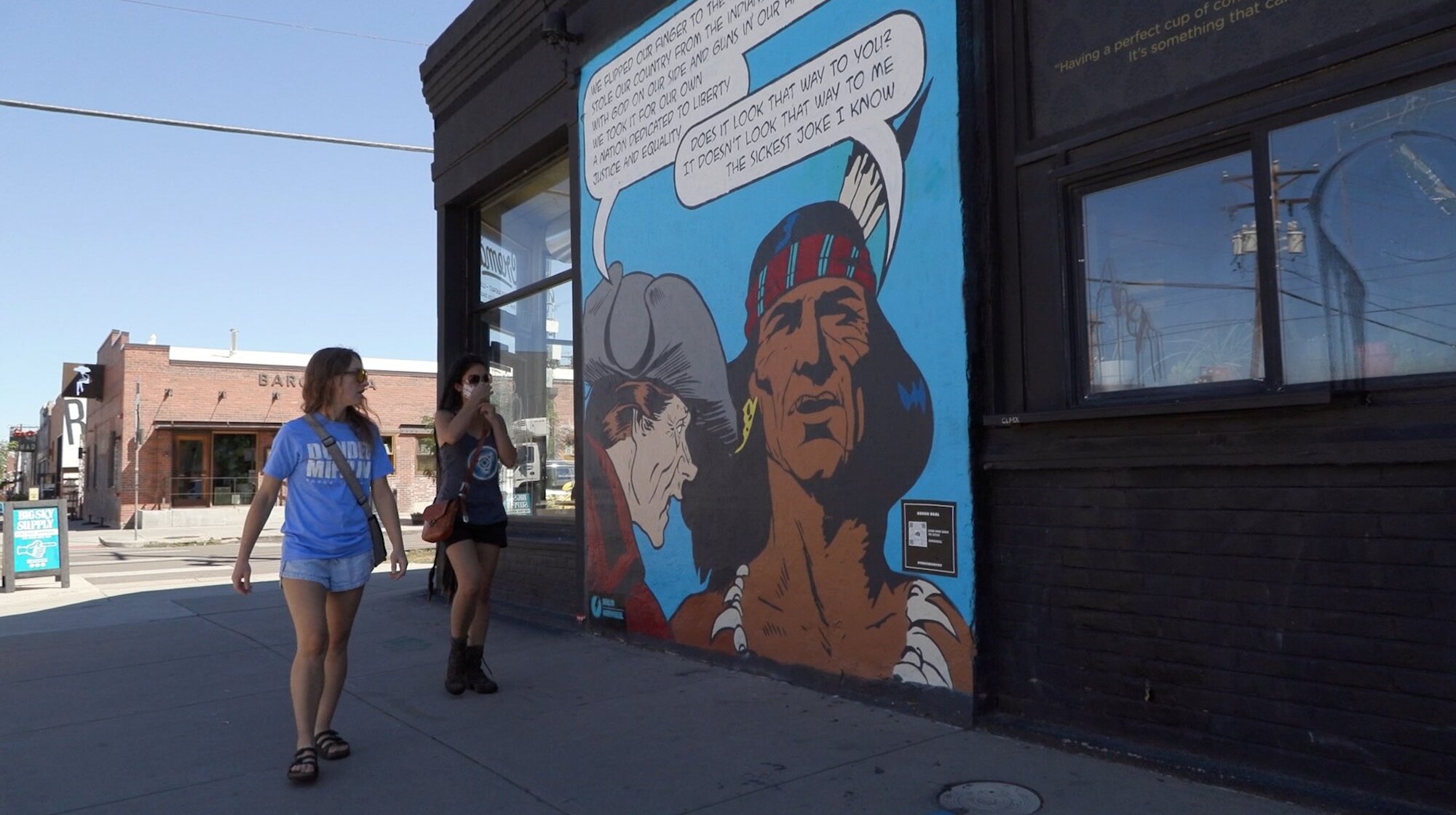Artist Gregg Deal is disrupting western stereotypes of Indigenous culture

PEYTON, Colo. — Gregg Deal considers the work he does a risk. In a 2018 TED Talk, the Colorado-based artist explained to the audience that creating anything about Native and Indigenous culture outside the bounds of western stereotypes is a professional liability. But Deal, who is a member of the Pyramid Lake Paiute tribe, believes using his craft to honor Indigenous experiences, challenge stereotypes, and push for accurate representations of Indigenous people in art is well worth the risk.
“The thing that I'm trying to say or the expression that I have within my work is really just sharing my perspective or my experience, as an Indigenous person, as a human being,” Deal told Rocky Mountain PBS. “I feel compelled to do work, to create work ... Oftentimes, my work ends up looking like a social mirror back ... sort of reflecting back in society.”
Deal has been pushing boundaries and creating thought-provoking art since he was young. After spending nearly 17 years in Washington, D.C., where he studied painting, graphic design and filmmaking, Deal moved to the Centennial State in 2015 for a residency at the Denver Art Museum.
Originally from Park City, Utah, Deal feels particularly drawn to Colorado.
“It reminds me of where I grew up but it's on the other side of the Rockies. The culture is different and frankly, a little bit more open,” Deal said about Colorado. “I feel like I belong here.”

While Deal’s art—which can be found throughout Denver and Colorado Springs—features bright colors, bursts of gold, and pop culture references, his work serves as social commentary of the power structures in place that often silence the voices of Indigenous people.
“I think someone once called my work ‘an anarchist undertone.' Not chaos, but basically using power structures that already exist and twisting them back onto themselves,” Deal said.
As a disruptor, a title coined by Deal himself, his work aims to dismantle stereotypical ideas of Indigenous people.
“How people think we exist, what we look like, what we sound like, how we dress, how we present: all of those things end up being a big part of subject matter that I use to disrupt,” Deal explained. “It sort of falls under an old punk ethos too, I think, in just constantly challenging and bucking the system.”
Deal’s work spans large-scale murals, paintings, prints, performative art, and spoken word, with many of his pieces utilizing punk rock lyrics from the 1970s to the early 2000s. As a self-proclaimed punk rocker, using music lyrics in his work, like The Clash, is Deal’s way of infusing his own experiences within the larger narrative of the Indigenous experience. To take a classic, “Indian image” and combine it with something from popular culture, according to Deal, challenges the public’s perception of Indigenous existence and representation.

In addition to addressing issues like the disenfranchisement or displacement of Indigenous people, Deal also uses his platform and voice to bring awareness to the epidemic of Missing and Murdered Indigenous women, girls, and Two Spirit people (MMIWG2S).
“I don’t make money off of those types of pieces because I believe they just need to be out there,” Deal said.
[Related: Mural in Colorado addresses violence against Indigenous women, girls, and Two Spirit individuals]
As his work continues to spread throughout Colorado, Deal also sees Native voices and representation picking up momentum.
“There are a number of North American Native artists in Denver, and there’s three of them, if we included myself, that are totally and completely on the rise,” Deal said.
However, as public interest in Indigenous culture grows, Deal stays focused on what calls to him: rejecting the expectations he feels the art industry places on Native artists to stay within the bounds of western culture, and staying true to his message.
“The biggest challenge [as an artist] is being someone who is Indigenous that might not fall in line with the status quo or the expectation of artists and being able to freely express yourself aside of that,” Deal said.
Deal believes artists like himself should remain consistent with their narrative, have integrity in their work, and continue to push forward even if the narratives don’t fit what people think art should be.
“I’d like to think that there’s definitely some changes taking place in terms of how more frequently we are seeing Indigenous people,” Deal said. “But those things can always go back to the way they were so we have to keep pushing no matter what.”
This is the first story in a series that will be featured in "Colorado Voices: Artists" airing October 28 at 7 p.m. on Rocky Mountain PBS.
Victoria Carodine is the Digital Content Producer for Rocky Mountain PBS. You can reach her at victoriacarodine@rmpbs.org.